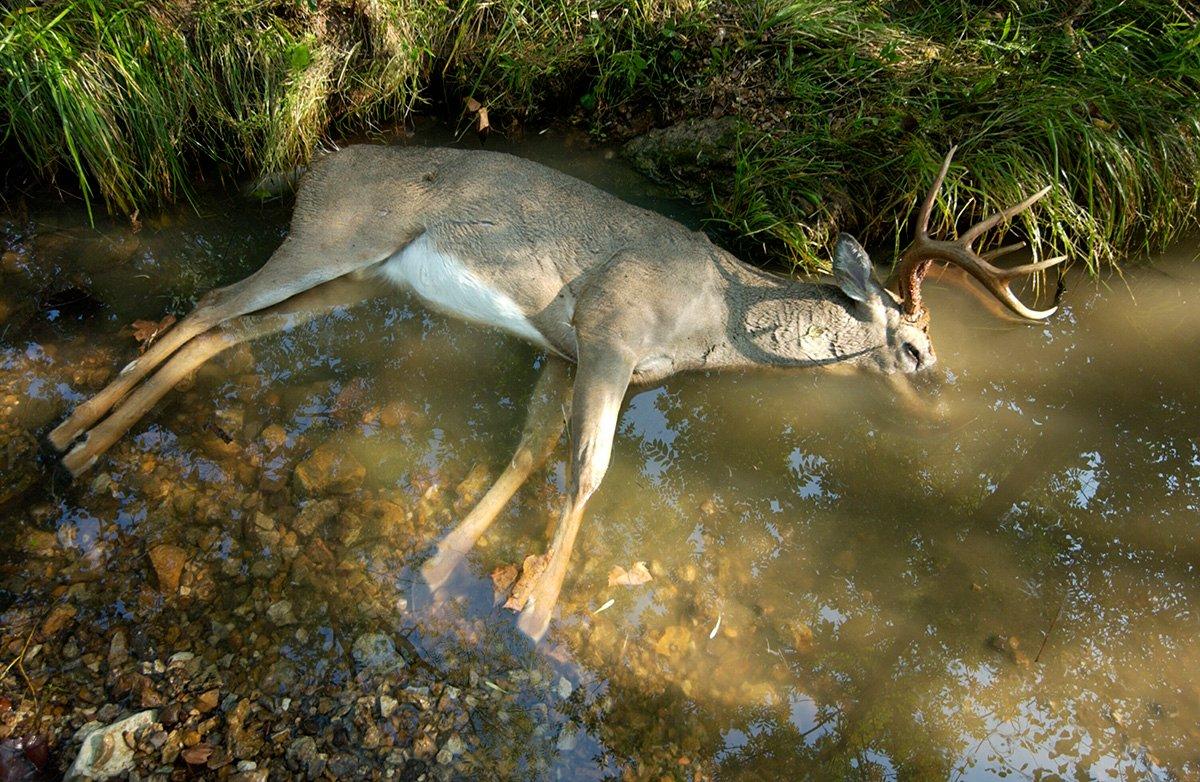It's mid-September and for now, low prevalence of this deadly disease is a bright spot for 2020
This has been a bizarre and difficult year for all of us, but I have some good news to report from the whitetail world. As of mid-September, outbreaks of epizootic hemorrhagic disease (EHD) in deer herds are minimal across America. In fact, so far, 2020 has the lowest infection rate I've seen since I started tracking this nasty deer disease a decade ago.
What Is EHD?
EHD is a virus that can infect whitetails in late summer, often during hot, dry conditions. It is transmitted to deer by biting midges, also known as no-see-ums. The incubation period is five to 10 days, and most deer die within 36 hours after clinical symptoms appear.
Symptoms of EHD include loss of appetite, weakness, and loss of fear of humans. Infected deer frequently seek out water sources, and many that succumb to it are found dead near creeks and ponds. Deer that die from EHD often have swollen tongues, eyelids, and necks.
In fact, so far, 2020 has the lowest infection rate I've seen since I started tracking this nasty deer disease a decade ago.
While EHD is usually fatal, some deer can survive it and develop an immunity to it. And it's seasonal; the first hard frost of autumn kills the midges that bite and infect the deer, effectively ending the threat for the year.
While a heavy outbreak of EHD can significantly reduce a local deer population in the short term, a milder and more typical incidence has a negligible impact on a state's overall deer population in the long run.
There is no treatment for, nor means to prevent, EHD in whitetails. The disease can only be confirmed by a laboratory that tests blood or tissue samples from infected deer.
EHD This Year
I have checked with my sources and done my research, and here is what I've found out.
- In August, the Indiana DNR reported that 26 deer had been observed sick or dead, mostly in the southern part of the state. A lab tested samples from some of those deer and has confirmed only one case of EHD so far.
- Last week, the New York State Department of Environmental Conservation confirmed that several whitetails in Putnam and Orange counties have died of EHD after tissue samples were tested at Cornell University.
- In my home state of Virginia, where localized outbreaks of EHD occur every summer, authorities are receiving reports of sick and dead deer in Augusta and Scott counties in the western part of the state. While it is yet to be confirmed in a lab, officials believe these deer perished from EHD. At this point, there is no indication that the outbreak is severe or widespread in the Old Dominion.
Those isolated incidents are the only cases of EHD I have documented this summer. Very good news, if surprising. Typically, even in a light virus year, there are more reports of EHD scattered across the country.
Aftermath of 2019 EHD
In the summer of 2019, the second-largest outbreak of EHD ever documented in Iowa killed some 2,000 deer across 63 counties, with the heaviest mortality in the state's south-central region. As a result, fewer hunting licenses were sold last fall. Also, the 2019-20 deer harvest was down 13%, due in part to the EHD outbreak.
Since Iowa is one of America's top big-buck states, I have closely monitored for any potential EHD there in 2020. Another severe outbreak piggybacked on last summer's kill could lower the deer numbers, including the state's prevalence of giant bucks, for several years.
Good news: My sources and Iowa DNR officials have no confirmable reports of EHD as of now, though they will keep fingers crossed until the first hard frosts occur across the state.
If this holds, while some counties in southern Iowa will likely experience residual lower deer numbers this season, whitetail populations should stabilize and recover across the state in two years or so. It is a similar situation over in Indiana, where a major outbreak of EHD in 2019 killed a significant number of deer. The hottest spots for the virus were in southern counties, from Greene to Clark.
More positive news is that EHD has not reared its ugly head in the Hoosier State this summer. The one case of EHD confirmed last month means nothing, unless an outbreak explodes in the coming days. Right now, there is no indication of that.
Indiana DNR biologists say that while it might take a little more time and effort for hunters to get their buck in southern counties where last summer's EHD reduced deer numbers a bit, the 2020 season should be a good one statewide.
Be Vigilant
While EHD is not a threat to humans, authorities say you should not handle or consume any deer that you suspect might be infected with the disease.
As you roam the woods scouting or bowhunting in the next few weeks, be on the lookout for any dead deer. You might well smell a rotting carcass first. Report any dead or sick animals to a conservation officer or regional biologist, who will determine if samples should be taken and tested for EHD.







